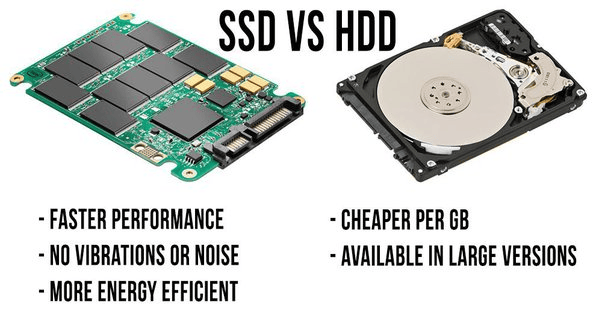Absolutely, let’s break down the concept of a 256GB SSD (Solid State Drive) step by step:
Understanding Storage Measurement
Storage capacity is measured in bytes, with larger capacities represented using prefixes like kilo, mega, giga, tera, etc.:
- 1 Kilobyte (KB) = 1,024 bytes
- 1 Megabyte (MB) = 1,024 KB
- 1 Gigabyte (GB) = 1,024 MB
- 1 Terabyte (TB) = 1,024 GB
What is an SSD?
A Solid State Drive (SSD) is a storage device that uses flash memory to store data persistently. Unlike traditional Hard Disk Drives (HDDs) that use spinning disks, SSDs have no moving parts, making them faster, more durable, and less prone to mechanical failure.
256GB SSD: Capacity
A 256GB SSD refers to the storage capacity of the drive. It means the SSD can store up to 256 gigabytes of data. This capacity is in the range of mid-sized storage options available for SSDs, providing enough space for an operating system, essential software, and a significant amount of user data like documents, photos, and some games or applications.
Usable Space
Not all 256GB will be available for user data due to formatting and system requirements. Some space is reserved for the file system and management functions, leaving slightly less than the full capacity for actual storage.
Performance
SSDs offer faster data transfer speeds compared to traditional HDDs. A 256GB SSD can provide quicker boot times, faster application loading, and improved overall system responsiveness due to its solid-state nature and efficient data retrieval.
Use Cases
A 256GB SSD is suitable for various purposes:
- Operating System: It’s an ideal size for installing an operating system like Windows, macOS, or Linux, leaving ample space for software and updates.
- Productivity: Great for everyday computing tasks, office work, web browsing, and storing moderate amounts of documents, images, and videos.
- Gaming: Can accommodate several games but might require additional storage for larger game libraries.
- Multimedia: Suitable for storing a moderate collection of music, photos, and some videos.
Upgrade Potential
If the storage requirements increase over time, many systems allow users to upgrade by adding more SSD storage or combining it with larger capacity HDDs for expanded storage options.
Considerations
When choosing an SSD, consider factors like read/write speeds, interface (SATA or NVMe), durability, and brand reliability to ensure the drive meets your performance and longevity expectations.
Conclusion
A 256GB SSD represents a mid-range storage option offering a balance between storage capacity, performance, and cost. It’s a versatile choice suitable for a wide range of computing needs, providing faster speeds and efficiency compared to traditional HDDs.
Future Trends
As technology advances, larger capacity SSDs become more accessible and affordable, allowing users to benefit from increased storage space without compromising speed or reliability.
Understanding what a 256GB SSD entails helps users make informed decisions when selecting storage solutions for their computing needs, considering both present requirements and future growth potential.
